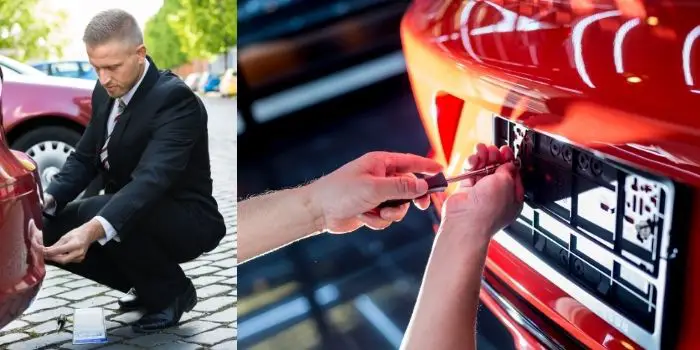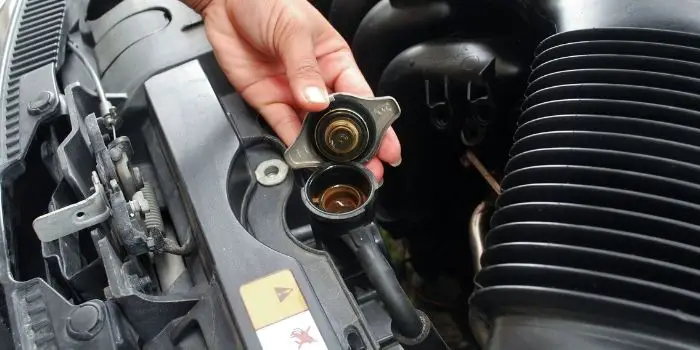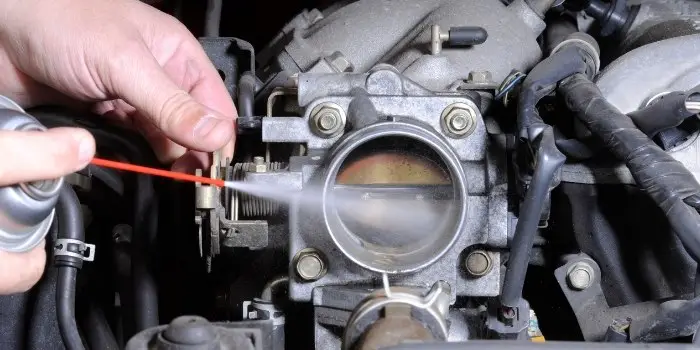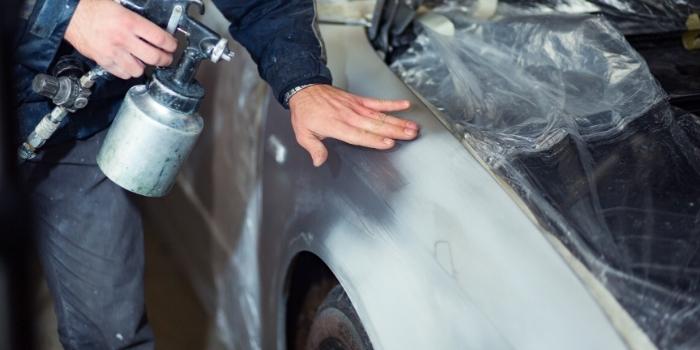Simple procedures, such as removing your car’s license plate screws, may become aggravating if they refuse to come out.
This is made worse when you don’t know how to pull them out and you need to change the license plate.
So, don’t worry, this article will explain why your license plate screws won’t come out and how to remove them.
The most common causes for your license plate screws turning but not coming out are that they are rusty, and stripped.
There are several techniques for dealing with these circumstances, such as using vinegar, penetrating oil, rotary tools, heat, so let’s discuss each of them one by one.
Table of Contents
Method #1 – Using Penetrating Oil
First of all, you can use penetrating oil to loosen the difficult screw.
Before trying to remove the screw, soak it in this penetrating oil for approximately 15 minutes.
The majority of penetrating oils are sold in spray cans.
They also come with a nozzle, allowing you to direct the spray to a particular area.
Here’s How to Apply
Spray the oil on the rear of the license plate, where the remaining screw is. This will assist in loosening the screw from the screw hole’s threads.
Once you’ve determined that the oil has done its job, you may remove the stuck screw with your screwdriver.
Method #2 – Using Vinegar
Vinegar is useful for more than simply cooking. You may also use it to free a jammed license plate screw.
Vinegar may also be used to remove rust from screws.
Here’s How to Apply
All you have to do is acquire some white vinegar and pour it on the obstinate screws.
Another option is to get a piece of cloth in white vinegar and massage or wipe it over the rusty screw’s head.
Allow the vinegar to work for a few minutes. This might be anything between 10 and 15 minutes.
After that, loosen the stubborn screw with a flat screwdriver of the appropriate size.
You may also remove the rust off the screw using a fine brush or scrape.
Make sure to pour extra vinegar on the screw if required.
Method #3 – Using an Impact wrench
If the license plate screw will not move from its hole after some point, an impact wrench might be used.
Only force can remove the screw from its socket, and a torque wrench can provide that force.
This specialized wrench is designed to generate more rotating torque.
Here’s How to Apply
Spray the screw with penetrating oil as your chances of success will improve.
To remove the screw, use the impact wrench.
The impact wrench is also safe to use since it allows you to regulate the rotational force that is used to extract the screw from its seat.
Method #4 – Using Rotary Tool
If the screw groove has already been stripped, there is no area to put the point of your flathead or Philips screw to unscrew the obstinate screw.
In this case, a rotary tool may be used to cut a groove the size of your flat screwdriver.
If the correct slot is formed on the stripped screw, you may now remove the screw from its seat with your flathead screwdriver.
Here are some materials required for this method:
- The rotary tool
- Penetrating oil
- Screwdriver
- Gloves, goggles, and other protective equipment
Here’s How to Apply
Get a rotary tool with the appropriate attachment for creating the correct groove size on the head of the stripped screw.
As you carve the groove on the screw head, use safety goggles and gloves. Small metal shards may fly into your eyes or hands.
Check that the size and depth of the groove are appropriate for your screwdriver.
Once a sufficient groove has been formed on the screw head, you may now unscrew the screw from its seat with your flat head screwdriver.
However, before you begin removing the screw, spray it liberally with penetrating oil to help in its removal.
After the penetrating oil has done its job, remove the screw from its seat with your flat head screwdriver.
Method #5 – Using Heat
All methods provided in this guide might fail but this method will not.
This is the ultimate method.
Here’s how it works.
Heating the metal screw causes it to expand, making it more malleable to the force applied by the screwdriver.
Here are some materials required for this method:
- Thermocouple torch
- Screwdriver
- Degreaser
- Ice-cold water
- Gloves
- Fire extinguisher
Here’s How to Apply
To remove corroded screws, first, clean them with a detergent or water-based degreaser.
Because the screws will be heated, no penetrating oil or other oil-based compounds should be utilized.
If you want to save money, you may use vinegar or baking soda.
Heat the screws using the gas torch.
Wait until smoke starts to come out of the screws.
When the screws become red, turn off the heat. Make certain that they are not overheated.
Because the screws are composed of metal, they have already expanded at this point.
Douse the screws in cold water right away. The metal screws will compress as a result of this and they will become free from their seats
Once all of the screws are free, use your screwdriver to remove them from their positions on the license plate.
Always have a fire extinguisher in hand while applying this method, in case the fire gets out of hand.
Following these methods, you can easily take out the stubborn screws from your license plate.
What to do so that screws don’t jam again?
Once you have removed the rusted license plate screws and are putting on the new ones, it’s important that you put them on in such a way that they don’t get jammed.
Here are a few tips that you can follow…
1. Appropriate tightening
Screws that are tightly screwed into the holes will take longer to remove.
If you continue to tighten the screws after they have reached their limit, the threads will begin to peel and you will end up with a worn license plate screw.
So, bear in mind, not to over tighten them.
To avoid this, just use a screwdriver or impact wrench with sufficient power or torque and spin each bolt head an appropriate number of times.
2. Using coarse threaded bolts
The fact that nuts and screws have tiny threads is one of the primary causes of jamming.
Fine threaded bolts do not survive long because it is difficult for them to form a good grip around the holes into which you have attempted to screw them.
So, if feasible, utilize coarse-thread screws for your license plate attachment requirements so that they can produce a firmer grip with the holes you’re attempting to secure them into.
They will have a better grip and will not corrode as easily as fine threaded ones.
Final Words
So these were different ways to remove license plate screws that turn but won’t come out.
Along with that keep in mind to use a screwdriver appropriate for the size of the screw on the license plate and also a good technique.
Which is using your weak hand to forcefully push down on the screwdriver handle and then twisting the screwdriver with your strong hand at the same time.

Based in Orem (Utah) John Paterson graduated from Utah Valley University and has begun writing in 2009. He has a large wealth of experience in writing articles related to cars, automotive repair, wheels, cleaning/maintenance, and much more. He has also written instructional articles in a similar niche for a few online publications as well. Currently, he works as a mechanic in his personal garage shop where he loves serving his countrymen from his heart.






